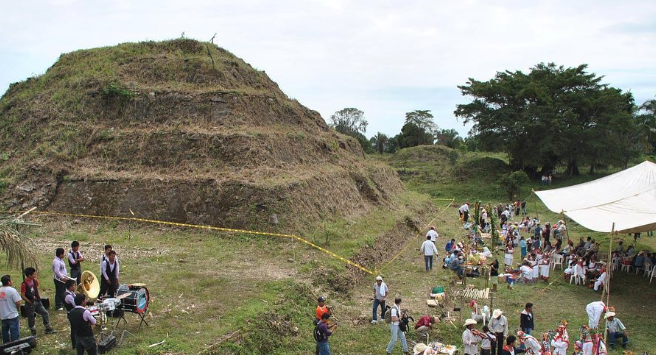Introduction to Mesa de Cacahuatenco
Mesa de Cacahuatenco is a significant Mesoamerican pre-Columbian archaeological site situated in the municipality of Ixhuatlán de Madero, in the northern region of Veracruz, Mexico. This site, positioned south of the Vinasca River, is approximately 44 kilometers west of Castillo de Teayo and about 80 kilometers southeast of the El Tajín archaeological site. Mesa de Cacahuatenco, with its extensive area and numerous structures, is recognized as a crucial ceremonial center within the Huasteca region.
Get your dose of History via Email
Historical Context of Veracruz
The state of Veracruz, during the pre-Columbian period, was predominantly inhabited by four indigenous cultures: the Huastecs and Otomi in the north, the Totonacs in the central-north, and the Olmecs in the southern part. These cultures have left behind remnants of their civilizations in various archaeological sites across Veracruz, including Pánuco, Castillo de Teayo, El Zapotal, and El Tajín, among others. Studies indicate that northern Veracruz has been occupied since at least 5600 BC, with societies transitioning from nomadic hunters and gatherers to sedentary farmers, eventually leading to the development of more complex societies.
The rise of the Olmec civilization around 1150 BC significantly influenced the social progression in the region. Although the exact builders of many of these cities remain a subject of debate, evidence suggests that the Huastecs might have been the settlers of some of these areas by the 1st century AD.
The Site of Mesa de Cacahuatenco
Mesa de Cacahuatenco, covering an area of more than 75 hectares and featuring over 60 identified structures, is considered one of the most important ceremonial centers in the Huasteca region. The site’s significance is further underscored by its hydraulic system, which is believed to have interconnected the city’s structures. Chronological studies place the site’s period of activity around 900 to 1500 AD. Despite the limited information on its founders, the architectural features of the site suggest a complex and sophisticated society.
Architectural Features
The site boasts more than 60 buildings, with the largest structure being a platform measuring 50 meters in length and 28 meters in width. The architectural complex includes a system of canals, residential structures, and 18 buildings within the central plaza. Additionally, a ball game court is present at the site, although specific details about its characteristics are not well-documented.
Hydraulic and Road System
Mesa de Cacahuatenco is distinguished by its unique hydraulic system, comprised of communicating canals and a Mayan-style road complex. This feature sets it apart from other archaeological sites and highlights the advanced engineering skills of its inhabitants.
Conclusion
Mesa de Cacahuatenco stands as a testament to the rich cultural and historical heritage of the Mesoamerican civilizations in the Huasteca region. Despite the ongoing excavations and the need for further research, the site’s extensive area, significant number of structures, and unique hydraulic system underscore its importance as a ceremonial center. As studies continue, it is anticipated that more insights will be gained into the lives of the people who built and inhabited this remarkable site.
Conclusion and Sources
Reputable sources used in the creation of this article include:
https://en.wikipedia.org/wiki/Mesa_de_Cacahuatenco

